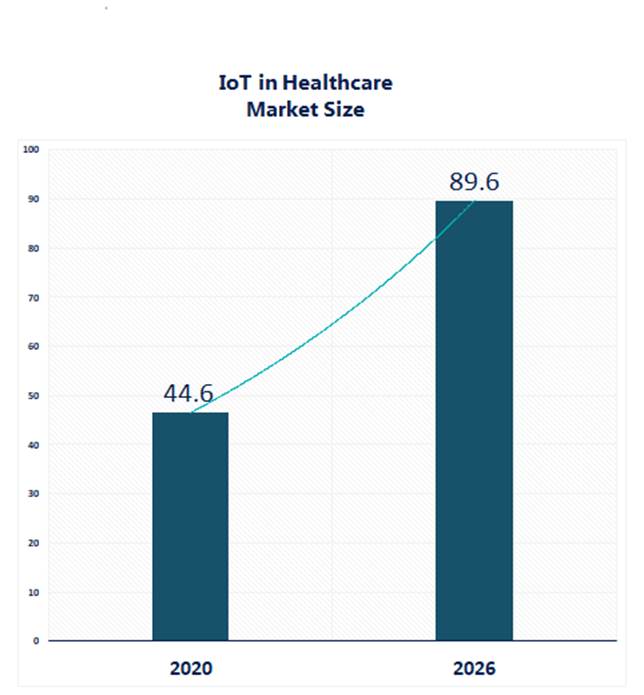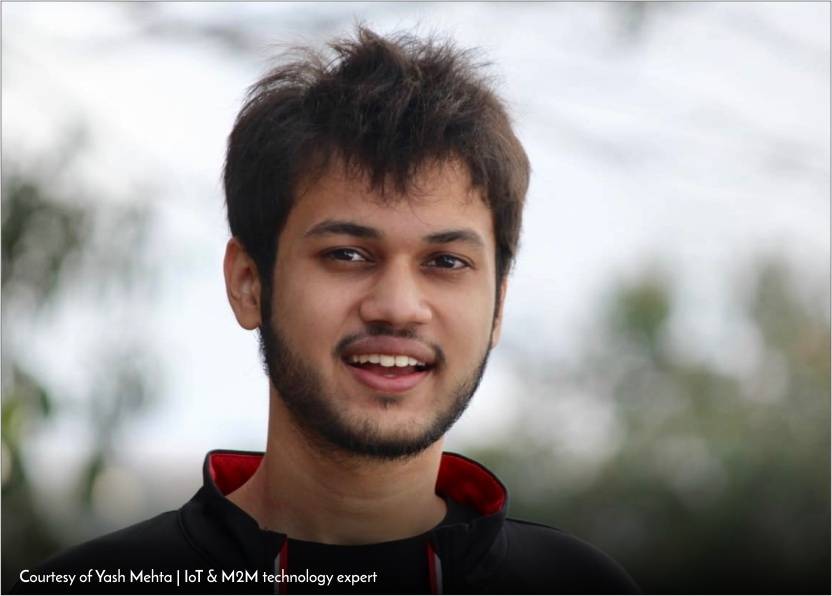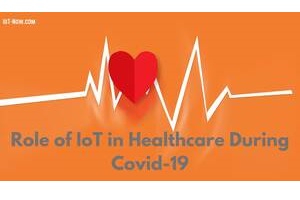The healthcare sector has been modernising at a fast pace over the years by utilising new technology in carrying out medical activities with increased accuracy. Despite the outbreak of Covid-19 which massively disrupted the day-to-day life of people across the globe, technology has been developing at a much faster pace to help the healthcare sector.
With the spread of this pandemic still at its peak, says Yash Mehta, an IoT and Big Data Science specialist, medical professionals are adopting new ways of treating patients, while avoiding in-person treatments, unless it is very necessary. Internet of Things (IoT) devices have been very methodical in making this possible.
Many companies are helping in assisting society during this pandemic, one of them is Ioterra, a marketplace that helps businesses to find suitable IoT service providers. It has also extended its services in helping the community to fight against Covid-19 by partnering with various other companies in providing medical devices and products.
For instance, monitoring a patient’s temperature has been the first and foremost step in knowing if he/she has been affected. Wearable IoT devices like smartwatches can provide necessary information about the patient’s heart rate, blood sugar level, blood oxygen level, and so on … without the need for any human assistance. Not just this, IoT has offered its services in so many ways for the healthcare sector during this unprecedented time.

The integration of IoT devices with smart sensors and algorithms in the medical field, that are connected to an application via the cloud and other connected devices, have been very helpful in fighting against this pandemic. Some of the important services offered by IoT in healthcare include, telemedicine, contact tracing, robotic sanitisation and data privacy and protection in the healthcare sector.
Telemedicine
Telemedicine refers to the process of collecting information about patients from a remote location without requiring their physical presence in the hospital. Due to the mandatory social distancing and lockdown being implemented all over, telemedicine has become the safer way of seeking medical help. Telemedicine is also found to be cost-effective as it eliminates the cost of travel and it increases patient engagement.
Wearable IoT devices like smartwatches have been very efficient in remotely collecting information on a patient’s heart rate, blood pressure and other vitals. From the collected data, the physician can monitor the patient. These devices are easy to manufacture, maintain and deploy and they provide security by protecting patient identity information (PII) and patient health information (PHI). According to a detailed study on IoT Product Development post-Covid, these wearable devices are beneficial in the following ways:
- Patient Monitoring – To monitor patient’s blood pressure, sugar level and temperature.
- Heart rate monitoring – For measuring heart rate accurately without affecting the patient’s mobility.
- Mood monitoring – To understand a patient’s mental state.
There are also non-wearable IoT medical devices such as ingestible sensors, connected respirators and connected contact lenses that are available in the market these days for various purposes.
Contact tracing
The incubation period of Covid-19 ranges from 1 to 14 days. But it is also possible that an asymptomatic person can also transmit the virus to other people. As this virus has the potential to spread faster and gets transmitted easily, it has become very important to find the people who have had contact with the affected person within the incubation period. In this regard, IoT devices have been very helpful.

Wearable IoT devices such as smart watches and smart thermometers detect the number of persons affected by tracking their temperature, as fever is considered to be the first symptom of this disease. Using artificial intelligence (AI) and Big Data these data are then collected and analysed. By doing this, most affected areas can be confined from other areas, and proper methods for quarantine and isolation can be administered to efficiently control the spread of this virus.
Real-time location systems such as RFID bracelets enable physicians to keep a track of patients during quarantine and recuperation periods by providing extensive care. These bracelets collect informative data that can be used for further research and development and also in understanding the nature of this virus.
Healthcare-related IoT revenues are expected to reach more than $135 billion (€111.13 billion) by 2025 with 75 billion actively-connected devices across the world.
Sanitising hospitals and affected areas using robots
Robotics have been gaining a lot of attention in the medical field lately. It is because of their capabilities to assist in performing highly complex tasks such as neurosurgery and cancer treatments. Apart from this, robotics plays an important role in maintaining hygienic conditions as well. In times like this where human interactions have to be minimised as much as possible.
Non-surgical robots can be used to sanitise and clean the rooms of the patient using UV-light, which is harmful to humans if exposed. Once this process is complete, the robot notifies the workers that the room is now safe to be used. Robotic disinfection methods are proving to be highly effective, whereas traditional disinfection methods were limited to the surface.
The global robotics market is estimated to reach $12.70 (€10.45) by 2025 with a CAGR of 16.5% from 2020 to 2025.
Data privacy and protection in healthcare
As the healthcare industry contains a lot of sensitive information about patients, it has been the prime target of many hackers and cybercriminals. Also, customer trust has been a major factor that has to be taken into consideration as policies vary across different platforms. Since the data transaction between the physician and the patient happens over the cloud, necessary steps have to be taken in protecting confidential information.
IoT has been associated with the healthcare sector for a long time for assisting IV-status, temperature and heart rate monitoring. But they were mostly confined to the hospital environment. In recent times, IoT has been extending its medical services outside the hospital environment and helping numerous people with various issues.
A study on the Impact of Covid in different IoT Industries makes it evident that IoT has been gaining a lot of momentum and has been setting new trends in the medical field. The technological advancement in the field of medicine has brought comfort to not only the patients but also to the doctors. Compared with the traditional ways of how things worked in the medical field, of late, IoT medical devices have brought out many positive effects in this field.
The author of this blog is Yash Mehta an IoT and Big Data Science specialist.
Comment on this article below or via Twitter: @VanillaPlus OR @jcvplus






